How to Build a Sales Prospect List
Casey O'Connor
Contents
- What Is Prospecting in Sales?
- What Is a Sales Prospect List?
- What to Know About Your Prospects When Creating Your List
- What Information to Include in Your List of Prospects
- How to Organize and Prioritize Your Sales Prospect List
- How to Begin Your Prospect Outreach
- Using Yesware to Improve Your Sales Prospecting
Sales prospecting refers to the act of searching for and nurturing new, best-fit sales opportunities through targeted lead generation strategies. The sales prospect list helps salespeople prioritize which leads to nurture and when.
In this article, we’ll go over everything you need to know about this stage of the sales process, and why it’s so crucial to optimize.
Here’s what we’ll cover:
- What Is Prospecting in Sales?
- And What Is a Sales Prospect List?
- What to Know About Your Prospects When Creating Your List
- What Information to Include in Your List of Prospects
- How to Organize and Prioritize Your Sales Prospect List
- How to Begin Your Prospect Outreach
- Using Yesware to Improve Your Sales Prospecting
What Is Prospecting in Sales?
Sales prospecting is the process of identifying, researching, and, in some cases, executing the initial outreach to good-fit customers for your product or service.
Many salespeople consider sales prospecting a “necessary evil” in the sales process. That’s because it represents the widest part of the sales pipeline, where salespeople are often stuck asking awkward and sometimes pushy questions to get a feel for a potential customer’s level of interest.

There’s good news for sales reps: prospecting actually doesn’t need to be awkward, painful, or time-consuming (at least, not excessively so).
In fact, sales prospecting, when done correctly, can be one of the biggest make-or-break factors in the overall success of your sales team.
Inbound and Outbound
Effective prospecting will look slightly different for every company, but they all come down to two basic strategies: inbound and outbound.
Outbound marketing approaches prospecting from more of a cold perspective. Sales reps in these scenarios work from a long and relatively broad list of companies that fit some general “good fit” demographics and reach out to them with cold emails or phone calls to further qualify them.
Inbound marketing, on the other hand, relies on the sharing of valuable content to generate opt-in leads that willingly share their contact information in exchange for free content that speaks to their pain points.
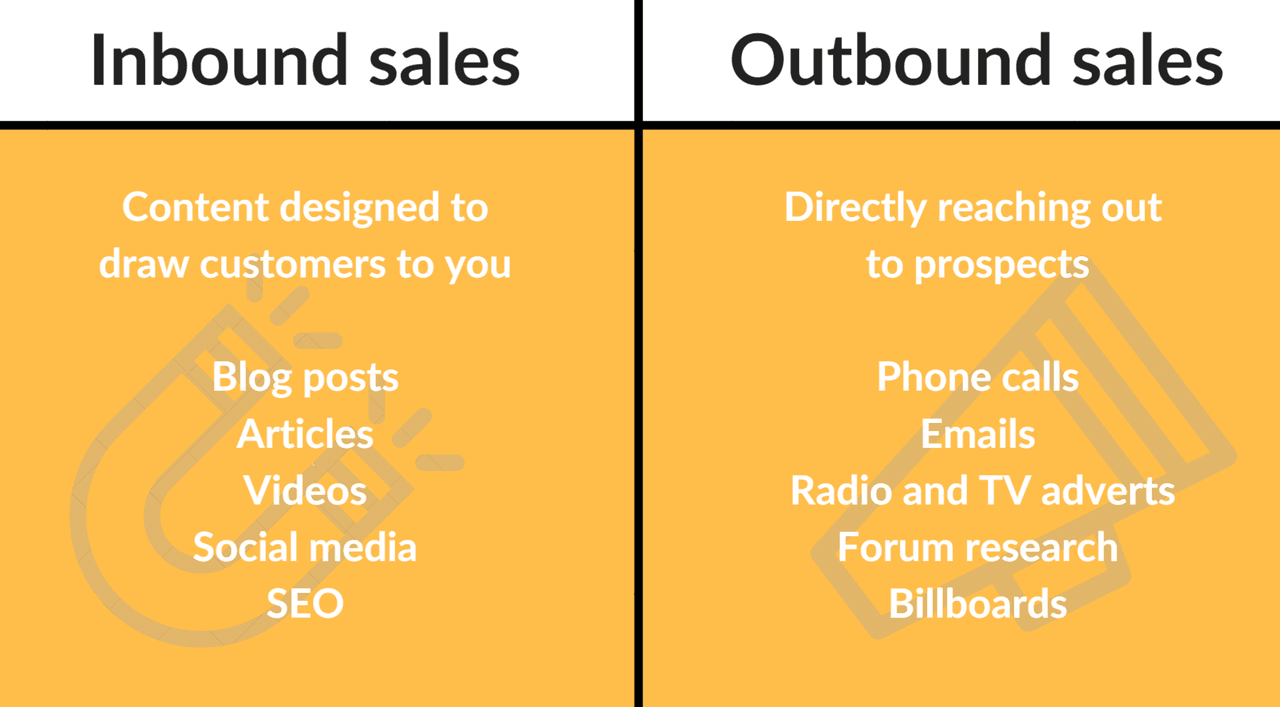
These days, most companies are moving more towards a full-fledged inbound marketing strategy. The truth is, though, that prospecting is actually most efficient — and produces the most lucrative prospecting lists — when executed via a hybrid approach of both inbound and outbound strategies. Cold calling and cold emailing can be very effective sales methods when utilized correctly.
Regardless of the methodologies your sales and marketing team subscribe to, the acts of prospecting and building the prospect list generally follow a relatively standard framework.
1. Understand Your Product
Before you can start building a targeted prospect list, your sales team needs to have a very detailed understanding of your offering. Depending on the experience level of your sales reps, and how long they’ve each been at your company, you might consider holding a team-wide product training. You can’t know who to sell to unless you know exactly what you’re selling.
We’re not just talking about the basic features and benefits, either — make sure your salesforce knows your USP like the back of their hand.
2. Understand Your Buyer
Once your sales reps have a thorough understanding of your value proposition, it’s time to take a look at the other side of the equation: the buyer.
It’s critical that your sales reps have a top-to-bottom understanding of the kind of company that would be best served by your product. They should be familiar with the firmographic benchmarks that make a company a good fit, as well as the specific pain points and influencing factors they’re likely to encounter in conversations with key decision-makers.
Much of this research can be done very effectively by studying the demographics of your existing customer base. After all, they already bought into your offer — that must mean they already have many of the characteristics of the ideal prospects you’re currently trying to engage.
3. Generate a List
Once you’ve hammered down your USP, a target market, and the potential prospects who would benefit most from it, it’s time to take a closer look at your options.
It’s okay to cast a wide net during this stage. Identify with your team a set of core metrics that indicate a company is worth qualifying further; any company that meets those benchmarks makes the initial prospecting list. Your research in the next stages will narrow the playing field.
4. Research
Your high-level prospecting list will whittle down pretty quickly once you start researching and qualifying leads.
Before reaching out via phone or email, spend time doing your own research on the company you’re considering targeting. Use LinkedIn or other social media to learn more about their company’s brand, audience, and values. Set Google alerts to keep your salespeople up-to-date on happenings in their field or industry. Use historical sales data to make educated guesses on potential customer value and readiness to buy.
This kind of back-end research will do one of two things:
- It will ensure you’re well-prepared to reach out to only the leads that represent promising and lucrative sales opportunities, or
- It will save you time in eliminating leads that would have ultimately been disqualified anyway through further discovery.
Detailed research will also allow you to customize the content you offer to well-qualified leads as you move through the rest of the sales process.
5. Work the Funnel
Once you’ve identified the most qualified leads from your prospect list, you can start nurturing them through the rest of the sales funnel. Ideally, you’ll have worked with your marketing team to create valuable content for the leads that make it through the subsequent stages.
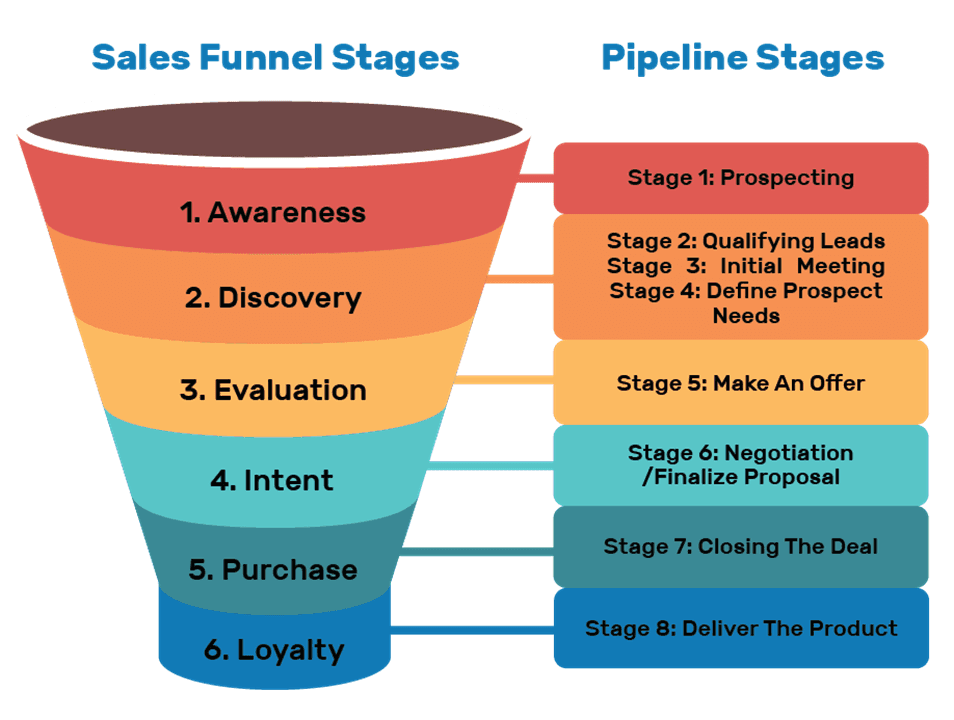 It’s no secret that prospecting can be a tedious task; this stage of the sales process typically demands the most time and energy from salespeople.
It’s no secret that prospecting can be a tedious task; this stage of the sales process typically demands the most time and energy from salespeople.
That being said, it’s also the most critical stage to get right; the more you can populate the top of your funnel with great-fit prospects, the higher your overall conversion rate will be.
What Is a Sales Prospect List?
Your sales prospect list is a list of companies who, on a surface level, seem like a good fit for your product and merit more looking into.
How successfully your team performs in the prospecting stage will ultimately depend on the quality of your prospect list. After all — you could be the most talented, well-trained salesperson in the world, but no skills or sales training can sell a product to a bad fit.
That’s why, ideally, your prospect list should be full of qualified or interested leads who have a good to strong chance of buying your product. Crafting your prospect list this way will help your sales reps spend the most time on the most valuable leads.
What to Know About Your Prospects When Creating Your List
When drafting your prospect list, there are a number of key data points your sales reps need to have available in order to determine who should make the cut.
In addition to a deep understanding of your product or service, as mentioned above, your sales reps and marketing team should also collaborate to build your ideal customer profile (ICP).
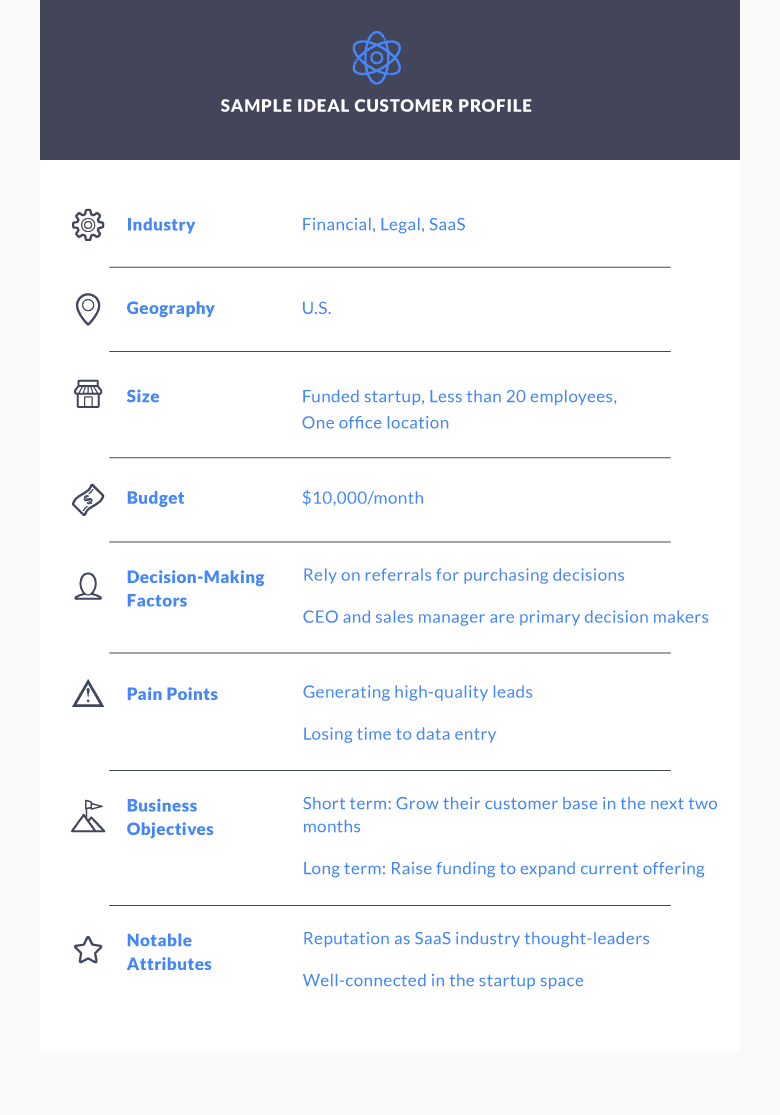
The specifics of what should go into your ICP will depend on your company, but most generally contain at least the following information:
- Company size
- Industry or field
- Company location
- Revenue
Once you’ve developed a reliable ICP, you can use that information to create your buyer persona.

The buyer persona outlines the possible or probable attributes of the key decision-makers within your prospect list. Your buyer persona will include everything in your ICP, as well as any combination of the following:
- Job title
- Salary
- Age of company
- Upcoming or recent funding initiatives
- Goals & interests
- Pain points
- Notable technology
- Company plans for expansion
The more you know about the decision-makers within your prospect list, the better.
What Information to Include in Your List of Prospects
Your prospect list should include the following in order for your salespeople to get the most out of it:
- Relevant ICP data
- Buyer persona details
- Company name
- Contact name
- Email address
- Phone number
- Any other notable information that could help the sales rep build a connection with the potential customer
Prospect profiles can run the gamut from very basic to very detailed. Make sure you collaborate with your sales team to determine what information they need readily available in order to engage prospects.
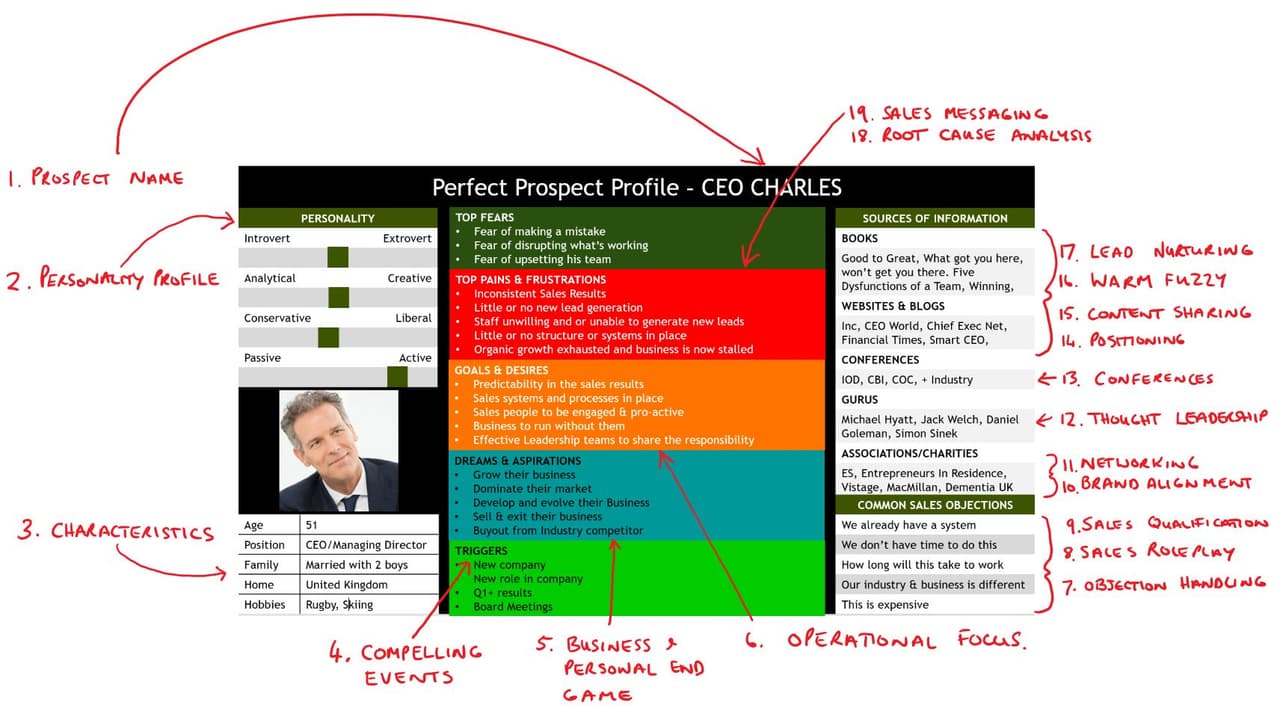
Your CRM can help you keep track of the various pieces of information you need to effectively engage them.
How to Organize and Prioritize Your Sales Prospect List
In general, you’ll want to prioritize your prospect list according to readiness to buy. You should aim to spend most of your resources on prospects who have a clear need for your product, as well as the budget to invest in it.
In order to further prioritize your sales prospect list, you first need to define your targets: do you want more deals? Bigger deals? Faster deals? Knowing your benchmarks and goals will help you shape your list according to the most urgent priority.
You’ll also want to consider the following as you hone your list:
- Is this prospect a good organizational fit for your company?
- Can you identify key stakeholders and decision-makers in the company, and do you understand their needle-movers?
- Does this prospect have any constraints, and are those constraints deal-breakers?
- Do you have familiarity with the potential customer’s market?
- Does this prospect have an awareness of your offering?
- What is the potential lifetime value of this client?
The answers to these questions will help you determine how many sales resources should be dedicated to a given prospect at any given time. The general rule of thumb is to classify prospects by the level of value you think you can provide to them, versus the level of value you stand to get in return.
One way to gauge potential clients’ eagerness to buy is by using email marketing analytics tools. Many prospecting software can measure how engaged each of your prospects is, and offer guidance on how to proceed with that prospect through the remainder of the funnel.
Tip: Yesware’s attachment tracking feature can give insight into the content your prospects find most valuable and engaging, so you can move more leads through the funnel.
You will find as you go through this part of the prospecting process that some leads have constraints. Don’t let these hold you back — some leads can be safely put on the back burner while they receive automated, lead-nurturing content until they move higher into the priority list.
In other words, keep in mind that “no” doesn’t always mean the end of the road for a prospect — learn when to decipher “no” from “not right now.”
How to Begin Your Prospect Outreach
Even with best-fit, match-made-in-heaven potential clients, many sales reps feel intimidated when they consider how to first reach out to well-qualified prospects.
Consider changing your mindset. Instead of thinking of your outreach as the beginning of the sales process, try reframing the task as one of help and assistance. Your job as a salesperson is to offer value in your interactions — providing value to the client should start long before they sign the dotted line.
If you approach your conversations from the perspective of wanting to help, the “sales” piece will come more easily and feel less awkward.
Consider one of the following outreach methods to move your prospects through the funnel:
Ask for an Introduction
Few things are more powerful when making a first impression than a positive introduction from a mutual connection.
When gearing up to engage with a new prospect, spend some time investigating whether you share a common contact. If you do, don’t be shy in asking them to put you in touch. Most business people are happy to network and provide chances to connect.
Use LinkedIn
LinkedIn is one of the most popular places to make a new connection; it’s easy and commonplace to share content and start conversations on LinkedIn or other social media.
Tip: Here are 40 ways to use LinkedIn for sales.
Try a Drip Campaign
Automated drip email campaigns are a great way to warm up a prospect before a more personalized discovery call. This takes some of the pressure off the salesperson, as some of the agitation and education can be done ahead of time.
Of course, we here at Yesware are also big believers in cold emailing and cold calling outreach campaigns. Even cold leads can quickly warm up with the right timing and content — if you find a prospect who seems well-qualified, but not yet aware of your product, don’t hesitate to reach out and start a conversation.
Using Yesware to Improve Your Sales Prospecting
Yesware’s prospecting campaign features can help you create automated email campaigns — including multi-channel ones with calls and social touches — to connect with more buyers, more easily.
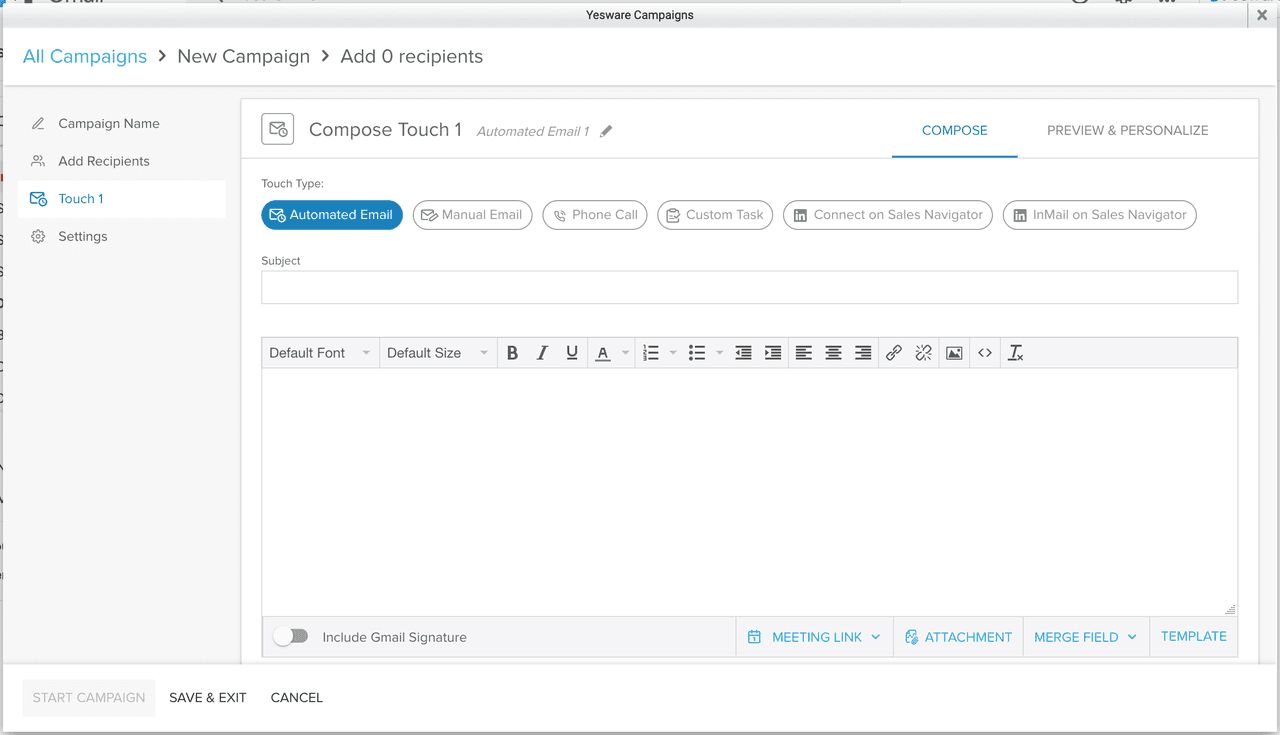
The software enables sales professionals to create customizable email templates, schedule meetings with no back-and-forth, and track engagement statistics as your prospects move through your funnel.
Yesware can optimize and amplify your prospecting efforts so you can reach more customers and close more deals.
Get sales tips and strategies delivered straight to your inbox.
Yesware will help you generate more sales right from your inbox. Try our Outlook add-on or Gmail Chrome extension for free, forever!
Related Articles
Casey O'Connor
Melissa Williams
Anya Vitko
Sales, deal management, and communication tips for your inbox

